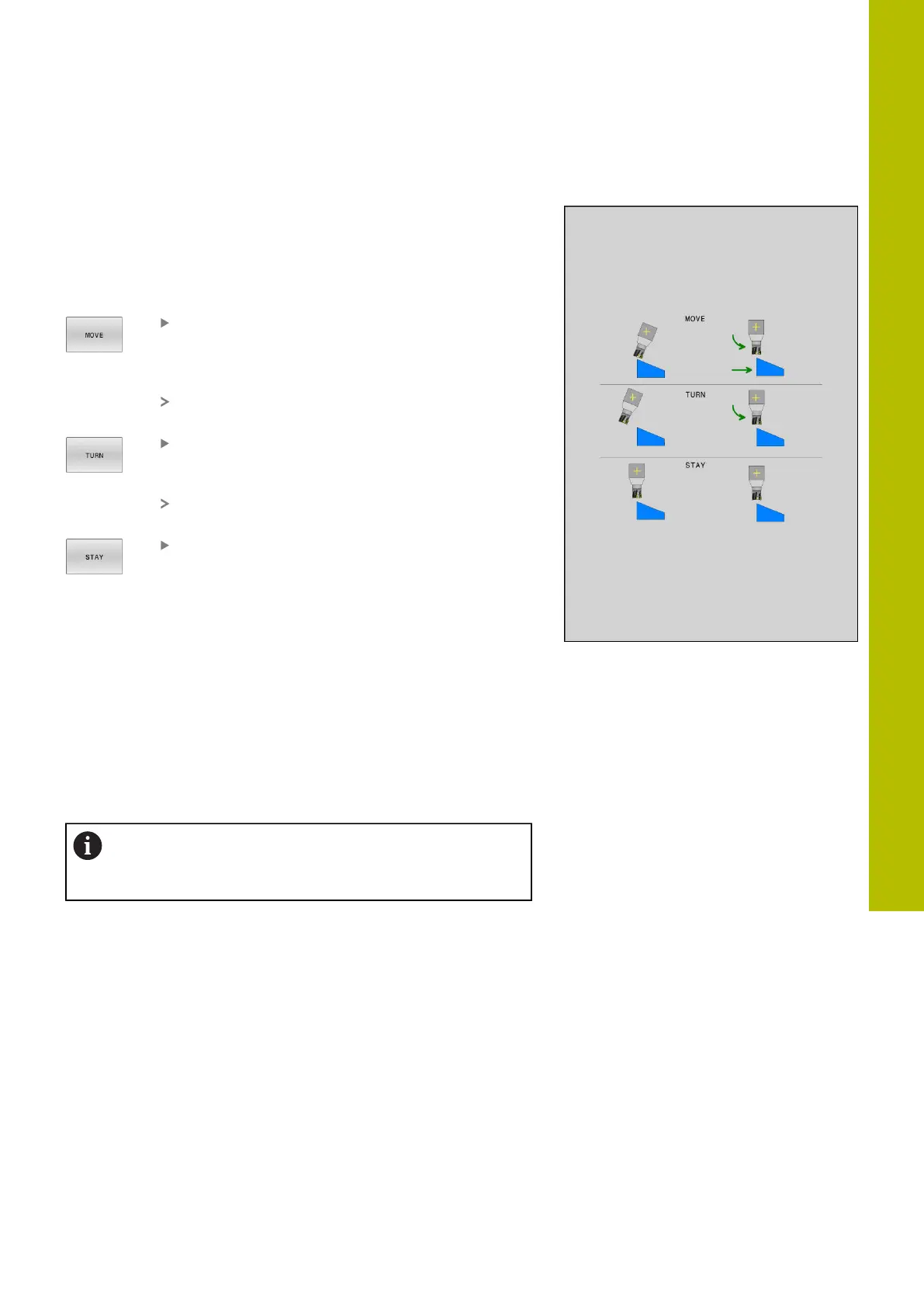Multiple-axis machining | The PLANE function: Tilting the working plane (option 8)
Automatic tilting into position MOVE/TURN/STAY
After you have entered all of the parameters for the plane definition,
you must specify how the control is to tilt the rotary axes to the
calculated axis value. This entry is mandatory.
The control offers the following ways of tilting the rotary axes to
the calculated axis values:
The PLANE function is to automatically tilt the
rotary axes to the calculated axis values, with
the relative position between the tool and the
workpiece remaining the same.
The control carries out a compensating
movement in the linear axes.
The PLANE function is to automatically tilt the
rotary axes to the calculated axis values, during
which only the rotary axes are positioned.
The control does not carry out a compensating
movement in the linear axes.
You tilt the rotary axes into position in a
subsequent, separate positioning block
If you have selected the MOVE option (PLANE function is to
automatically tilt into position with a compensation movement), then
the two subsequently declared parameters Dist. tool tip - center of
rot. and Feed rate? F= must still be defined.
If you have selected the TURN option (PLANE function is to
automatically tilt into position without compensation movement),
then the subsequently declared Feed rate? parameter F= must still
be defined.
As an alternative to a feed rate F defined directly by a numerical
value, you can also tilt the axes into position with FMAX (rapid
traverse) or FAUTO (feed rate from the TOOL CALL block).
If you use PLANE together with STAY, you have to
position the rotary axes in a separate block after the
PLANE function.
11
HEIDENHAIN | TNC620 | Klartext Programming User's Manual | 01/2022
451

